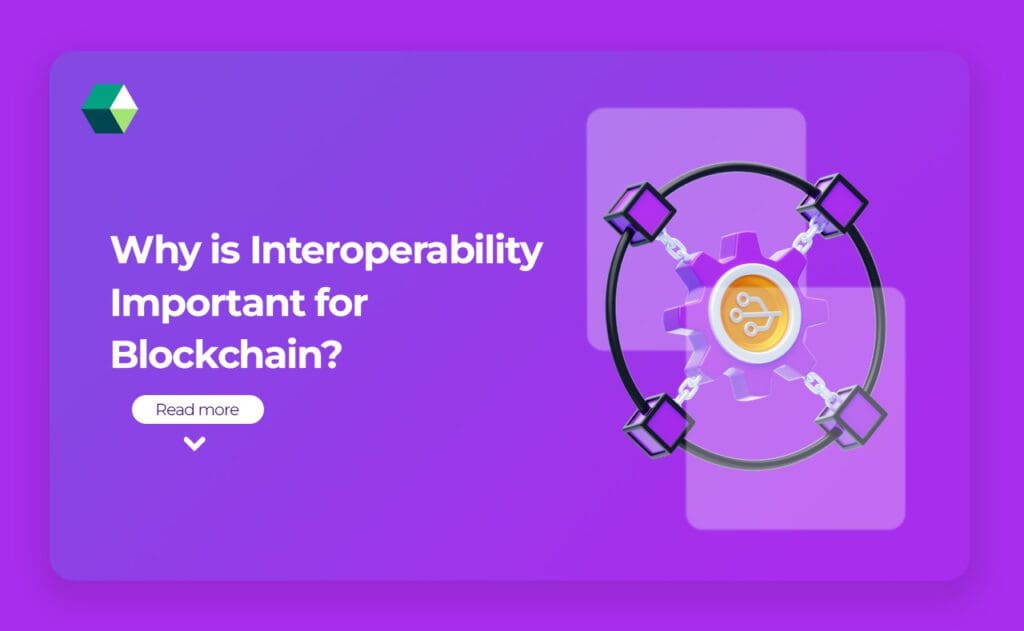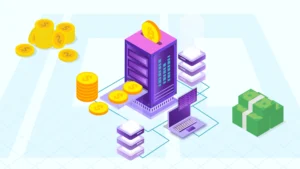
In the world of blockchain technology, interoperability is like having a universal adapter that lets different devices (or blockchains) work together smoothly. Imagine you have several blockchain systems that need to communicate and share information. Interoperability makes sure these systems can do that seamlessly. Let’s explore why this is so important.
What is Blockchain Interoperability?
Blockchain interoperability refers to the ability of different blockchain networks to exchange information and work together effectively. Each blockchain operates independently, often with its own set of rules, protocols, and data formats. Interoperability ensures that these isolated networks can interact, share data, and even transfer assets across different blockchains. For example, if you want to use a token from one blockchain on another, interoperability solutions make this possible. Without interoperability, the benefits of blockchain technology would be limited to isolated systems, preventing the creation of more complex and useful decentralized applications.
Blockchain Consulting Services Help with Cross-Chain Solutions
Blockchain consulting services plays a crucial role in developing cross-chain solutions. These services provide expertise and guidance on how to connect different blockchain networks, enabling smoother and more efficient interactions. Consultants help businesses understand their needs, design custom interoperability solutions, and implement these solutions effectively.
Consultants assess the existing infrastructure, identify the gaps in communication between different blockchains, and propose tailored solutions. They also help with integrating interoperability solutions into existing systems, ensuring compatibility and efficiency. With their expertise, businesses can leverage blockchain technology to its fullest potential by enabling seamless cross-chain bridges and interactions.
Types of Blockchain Interoperability Solutions
Several methods are used to achieve blockchain interoperability, each with its own strengths and use cases:
-
Cross-Chain Communication Protocols
These protocols facilitate the exchange of information between different blockchains. They work by defining a common language or standard that multiple blockchains can understand. Examples include Polkadot and Cosmos, which use their respective protocols to enable communication between different blockchains.
-
Atomic Swaps
Atomic swaps allow for direct peer-to-peer exchanges of different cryptocurrencies or tokens without the need for a third party. This method ensures that transactions are completed simultaneously on both blockchains, minimizing the risk of fraud. It’s particularly useful for exchanging assets between different blockchains in a secure and efficient manner.
-
Interoperability Bridges
Bridges are specialized tools that connect different blockchains, allowing them to communicate and transfer assets. These bridges often use smart contracts to manage and verify transactions across chains. An example is the Wrapped Bitcoin (WBTC) bridge, which allows Bitcoin to be used on the Ethereum network.
-
Sidechains
Sidechains are separate blockchains that run parallel to the main blockchain. They are connected to the main chain through a two-way peg, allowing assets and information to move between the main chain and the sidechain. This method is useful for offloading tasks or testing new features without affecting the main blockchain.
Important of Interoperability in Blockchain Development
Interoperability is crucial in blockchain development because it allows different blockchain networks to work together seamlessly. Without interoperability, each blockchain operates in isolation, which limits the potential benefits and applications of this technology. By enabling blockchains to communicate and exchange information, interoperability helps create a more integrated and functional ecosystem. This means that users and developers can take advantage of features from various blockchain development services, leading to more innovative and powerful applications.
For example, you can use a blockchain known for its smart contracts alongside one that excels in fast transactions, combining their strengths to build better services. Interoperability also promotes broader adoption of blockchain technology by making it easier to use and integrate into different systems. Overall, it enhances the flexibility, efficiency, and capabilities of blockchain networks, driving the technology forward and unlocking new possibilities.
Examples of Interoperability in Blockchain Technology
-
Cosmos Network
Cosmos aims to create an “Internet of Blockchains,” where various independent blockchains (called zones) can communicate and transfer assets seamlessly. Cosmos uses the Inter-Blockchain Communication (IBC) protocol to enable data and asset transfers between different blockchains within its ecosystem. The Cosmos Hub acts as a central hub that connects these zones, facilitating cross-chain interactions.
-
Chainlink
Chainlink is a decentralized oracle network that provides real-world data to smart contracts on various blockchains. Chainlink allows smart contracts on different blockchains to access external data sources, APIs, and payment systems. This enables interoperability by integrating off-chain data with on-chain applications.
-
Polygon (formerly Matic Network)
Polygon is a layer-2 scaling solution for Ethereum that enhances its scalability and performance. It also facilitates interoperability between Ethereum and other blockchains. Polygon uses sidechains and a framework for connecting different blockchains to Ethereum, enabling smoother interactions and transactions between them. It provides tools for developers to build and connect decentralized applications (dApps) across multiple blockchains.
-
Wrapped Assets
Wrapped assets are digital tokens that represent assets from one blockchain on another blockchain. For example, Wrapped Bitcoin (WBTC) is a Bitcoin-backed ERC-20 token on Ethereum. Bitcoin is locked in a custodian’s wallet, and WBTC tokens are issued on the Ethereum blockchain, representing the equivalent amount of Bitcoin.
-
Aavegotchi
Aavegotchi is a blockchain game that combines NFTs (non-fungible tokens) with DeFi (decentralized finance) elements. It uses interoperability to integrate DeFi protocols with NFTs. For example, players can stake tokens from various DeFi protocols to influence their Aavegotchi’s attributes and gameplay.
What Makes Nadcab Labs Great for Blockchain Bridges?
Nadcab Labs stands out in creating effective blockchain bridges because of its deep expertise and innovative approach. They understand the complexities of different blockchain networks and design custom solutions to connect them smoothly. Their team uses advanced technology to ensure that these bridges are both secure and efficient, allowing assets and data to move seamlessly between blockchains. Nadcab Labs also focuses on tailoring solutions to meet specific needs, ensuring that each project gets the right kind of support. Their commitment to security means that transactions are protected against potential threats. Overall, Nadcab Labs’ combination of technical know-how, customized solutions, and strong security measures makes them a top choice for developing reliable blockchain bridges.







